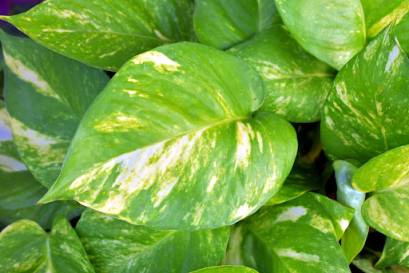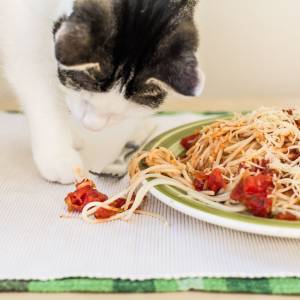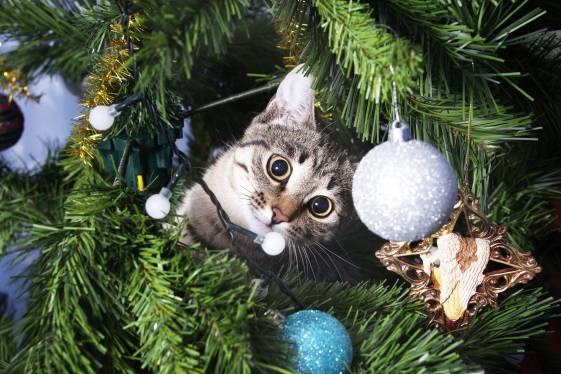Connect with a verified veterinarian in minutes. Licensed vets are available 24/7 to answer your questions. No need to worry about your furry family member.
Has your cat eaten a pothos plant? Are you worried the pothos will make your cat sick? If so, then you’ve come to the right place. It’s scary when our cats eat something they shouldn’t.
In this article, we’ve put together some information about pothos plants, and whether or not they can make your cat sick. Let’s get started!
What is a Pothos Plant?
A pothos plant (Epipremnum aureum) is a popular houseplant found in many homes. You may hear it referred to as the golden pothos, devil’s ivy, taro vine, or ivy arum. These plants are extremely popular as houseplants because they’re easy to care for.
Araceae, Philodendron, and Peace Lily are all common names for the same plant. It’s a type of philodendron, and they can be grown as indoor plants or in the garden. They can be kept as houseplants, potted plants, or hanging plants.
But there are a few things you should know about these plants before you start to grow them in your home. Pothos is poisonous to cats, and it can cause health problems for them if ingested. If you want to keep your cat safe from this plant, you need to be aware of its toxicity and know how to properly care for your cat around this plant.
Sometimes cats are drawn to these and other houseplants. Some cats like to bat the leaves around, while others may try to nibble on the plant. No one is sure why kitties choose to eat the plant.
Are Pothos Toxic To Cats?
Pothos plants are toxic to cats (and dogs) if eaten. Thankfully, the toxic plant usually isn’t dangerous enough to kill a cat.
Pothos contain something called insoluble calcium oxalate crystals. These crystals can be very harmful to our cats.

Review symptoms, medications & behavior to keep your pets healthy with a Vet Online in just minutes.
Ask a Vet Live NowWhat are Insoluble Calcium Oxalate Crystals?
Insoluble calcium oxalate crystals are needle-sharp crystals found in many plants. It’s even possible to see these crystals in a damaged plant leaf, as they’re large enough to be visible without a microscope. Scientists believe the crystals may be a form of protection against insects that feed on the plants. But they can also cause problems in cats (and other pets) that eat these plants.
If eaten, the leaves that contain insoluble calcium oxalate crystals can cause irritation to the face and mouth, as well as gastrointestinal irritation. On the skin, the sharp crystals cause pain and irritation on contact. However, these crystals can also cause severe irritation of the throat, causing swelling and difficulty breathing.
Symptoms of Pothos Plant Ingestion in Cats
You may notice these symptoms if your cat has eaten part of a pothos plant:
- Eye irritation (if the chemicals from the plant end up on your cat’s paw, and she rubs her face)
- Mouth irritation
- Tongue swelling and/or irritation
- Foaming at the mouth/excessive drooling
- Difficulty swallowing
- Vomiting
- Diarrhea
- Difficulty breathing
- Pawing at face/mouth/eyes
- Salivation
Oral irritation can occur to our cats if the plant is chewed on or swallowed. Our cats can also get very upset stomachs from eating pothos plants.
Irritation of the mouth may cause an intense burning sensation in the mouth and throat. This burning sensation can last for several hours. In addition, your cat may experience decreased appetite and possibly depression. Cats that ingest pothos can also develop anemia and kidney failure.
If you suspect your pet may have eaten any part of a pothos plant it is vital to contact your veterinarian immediately for medical advice. Your veterinarian may recommend your pet is examined at the clinic. Your veterinarian will be able to advise on the next best step for your cat. If you notice any of the above symptoms, contact your veterinarian for advice, even if you are not sure if your cat has eaten something they shouldn’t have.
Diagnosis of Insoluble Calcium Oxalates Poisoning in Cats
If your fur baby has a history of eating or chewing on plants, and you found her chewing on the pothos, she may have insoluble calcium oxalate poisoning. This is usually the easiest way to diagnose the condition. Another sign that your cat could have this condition is if you find chewed up leaves or stems near your kitty, along with any of the symptoms listed below.
It’s helpful if you can bring a sample of the plant, along with a description of the plant and the name of the species (if you know it). This information can help the vet determine what your kitty has eaten and how best to treat her symptoms.
Avoid handling the plant yourself; wear gloves or use a plastic bag over your hand to get a sample of the plant for the vet. Then put this sample in a sealed plastic bag and take to the vet’s.
Treatment of Pothos Plants Ingestion in Cats
When you reach the veterinary clinic, they will perform a complete physical on your cat. The vet may also order lab work (blood tests) and may recommend an ultrasound and/or x-rays of your cat’s abdomen (tummy).
Treatment may include veterinary staff washing your cat’s affected body parts (paws, face, etc.) Your vet may recommend inducing vomiting for your cat. It is never recommended to induce vomiting at home, as the risk of choking is very high. Your vet will also treat the vomiting, diarrhea, and other symptoms your cat may be having.
Your cat may need to spend several days in the veterinary clinic receiving treatment for pothos poisoning. This will usually involve your cat receiving IV fluids (a drip) to help flush the toxins out of their body, medications, and repeated blood tests to monitor their response to treatment. The sooner your cat receives veterinary care after eating parts of a pothos plant, the better their chance of recovery is.
Connect with a verified veterinarian in minutes. Licensed vets are available 24/7 to answer your questions. No need to worry about your furry family member.

Evie Moloney, RCVS
This article has been reviewed and approved by an independent Veterinarian: Evie is a vet surgeon who graduated from the University College Dublin, which is the only university offering the veterinary medicine degree in Ireland. She really enjoys surgery and has also worked as an emergency and critical care vet. She is passionate about sharing education about preventative health care for pets, especially the importance of regular dog and cat teeth brushing at home. She also enjoys helping owners find practical solutions for keeping pets as comfortable as possible while living with conditions such as arthritis. When not working, she enjoys hiking and swimming.
Review symptoms, medications & behavior to keep your pets healthy with a Vet Online in just minutes.
Ask a Vet Live Now





